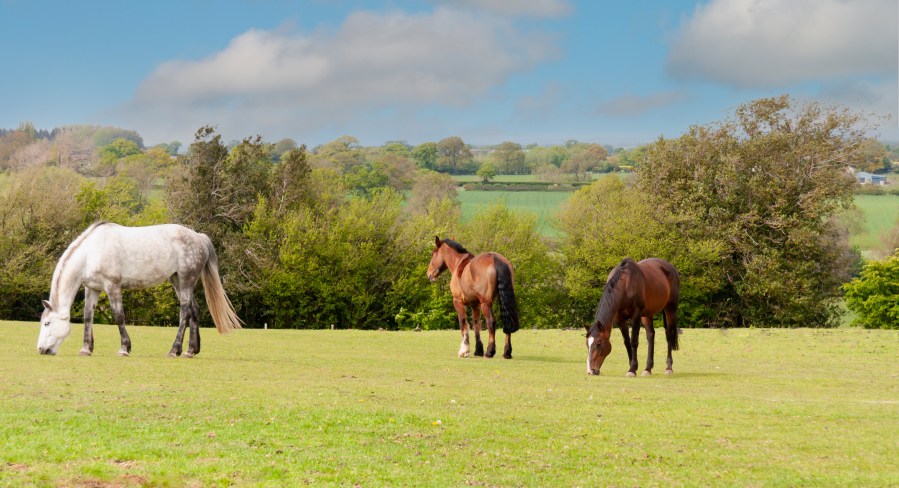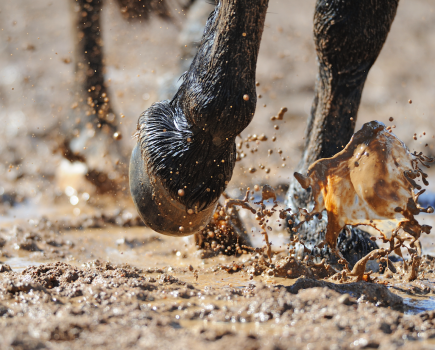Spring is a much-welcomed season for most, no more than for a horse owner after a long winter, but the increased risk of spring laminitis and its affects on horse health is a worry for most. Evolutionarily, spring grass growth would be a much-needed source of energy and nutrition after a long, hard winter had used up all the horse’s fat stores from the previous year.
Horses have evolved to lose weight in the autumn/winter and gain it in the spring/summer, and so the idea of weight gain in the coming months is nothing but ordinary for the horse. However, we have created a management system which prevents this weight loss in the colder months.
In fact, we have become experts at maintaining our horses’ weight, by way of rugging, feeding and stabling. Horses skip the natural process of winter weight loss and enter spring with the body condition of Santa Claus — there is now no safety buffer against the impending weight gain from the spring grass. This is why so many horses succumb to ‘spring laminitis’.
What is a horse’s metabolic red zone?
It is not the season itself that causes spring laminitis, nor is there anything special about the grass growing at this time. It’s just that the horse had no margin for error in its fat stores before it entered the ‘red zone’, which tipped it into metabolic difficulty, namely insulin dysregulation and subsequent laminitis.
There is a caveat to all this. Our grass paddocks are sadly not suitable for many of our horses and ponies. While bright green swards of lush grass are beautiful to look at, they are in fact far from what is acceptable nutritionally from our horses.
Horses are designed to graze sparse, low-nutrition plains. Most horse grazing in the UK was once pasture for cattle who needed the energy and nutrition from their grazing, as they were producing high milk yields and supporting fast growth rates. Our horses are doing neither of these things, and are grazing grass which is equivalent to the diets of marathon runners or Sumo wrestlers.
How to lower the risk of spring laminitis
If weight gain is not an option for your horse because he already has fat stores, then it is worth considering the following as part of your tailored management system:
- Restrict access to grass by strip-grazing, track-grazing, co-grazing, post-grazing and/or using a grazing muzzle.
- Take off all rugs — yes ALL rugs — as the effort of staying warm burns calories.
- Increase exercise. Get your horse on an increased plane of exercise, boosting the metabolic rate and improving the insulin sensitivity in advance of the increased calorie intake. Interval training is particularly useful for this.
- Feed a low-calories balancer only, no chaff or chop
- Use a small-hole haynet, double-net or other form of trickle feeder for forage
The important thing is acting now. There is no time to prevent laminits when it happens, and any horse carrying fat stores is a ticking time bomb. Some cope with excess fat better than others, but there is no way of knowing how far from the tipping point your horse is.
Main image: credit Shutterstock
Have you heard about Your Horse’s #FitNotFat campaign? Equine obesity is an enormous welfare problem and we’re on a mission to provide owners and riders with the knowledge, skills and information you need to keep your horse in tip-top health. It could be life saving! Find out more










